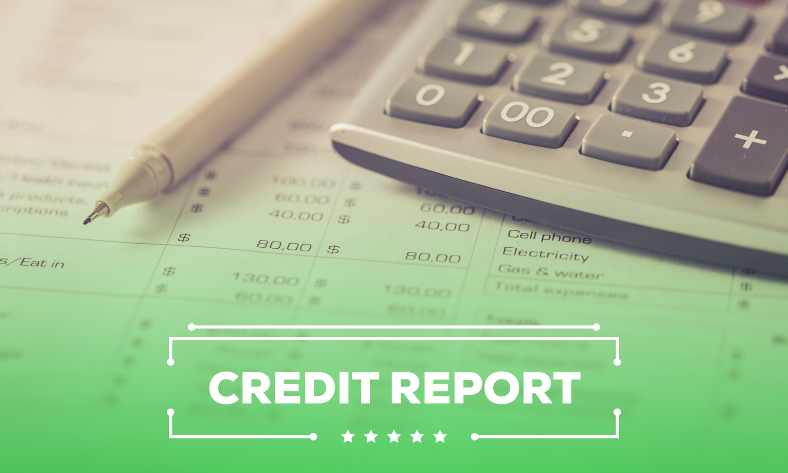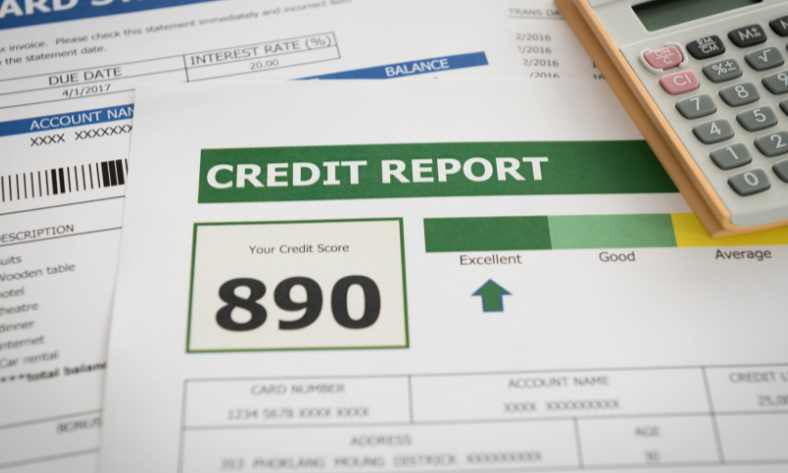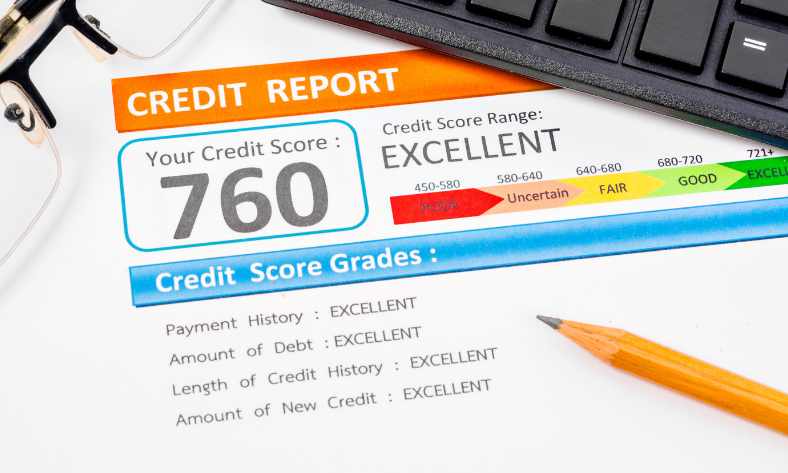With the increasing importance of good credit in today’s world, many people are turning to DIY credit repair. One popular method for repairing your credit is by sending 609 dispute letters. But do these letters actually work? In this article, we will provide a complete guide to DIY credit repair using 609 dispute letters and discuss if they can really help you improve your credit score.
Do 609 Credit Dispute Letters Actually Work?
609 Dispute Letters: Is DIY Credit Repair Possible?
There is a lot of misinformation about the Section 609 Letter. This letter does not eliminate debt from your credit report or restore your credit score right away. But it can help you improve your financial standing. Let’s take a closer look at how it works.

What is a 609 Letter?
Do you know what a 609 Letter is? This type of letter is a powerful tool that can help individuals repair or improve their credit. It’s an important document to understand, so read on for more information!
Originating from the Fair Credit Reporting Act’s (FCRA) Section 609 (A) (1) (a), a 609 Letter is used by consumers to obtain certain information that may be outlined in their credit report. This part of the FCRA grants individuals with such rights and privileges for their own protection.
A 609 letter is basically a request for information about a debt. Whenever you ask for information in accordance with FCRA 609 (A) (1) (a), the credit bureau must only confirm what they have on file. This way, your records remain protected and accurate.
Although your rights to dispute credit report information are actually derived from the Federal Credit Reporting Act Sections 611 and 623, most individuals only know of section 609. As a result, many people often refer to dispute letters as “609 letters”.

DIY Credit Repair with 609 Letters – Your Comprehensive Guide
Does Section 609 Really Work To Repair Credit?
If you submit a Section 609 FCRA verifiable proof request letter, the credit reporting agencies are obligated to provide you with:
- A majority of the data in your consumer credit report.
- The origin of your credit profile details.
According to Section 609, you may be eligible for the credit or refund that is specified. Additionally, it is possible to dispute any inaccurate information found on your report.
What Can You Dispute?
Are you convinced that an item on your credit report is inaccurate? Don’t worry! You have the right to contest it. The credit bureau must investigate your dispute and, if they find out the listing was erroneous, take away the error at no cost – yes at NO COST – to you whatsoever. To support your request, you will likely need to provide related documents or records.
If you find an inaccuracy on your credit report, you can dispute it with the credit bureau. This does not mean that the inaccuracy will be removed, but if your creditor finds evidence of an error, they are required by law to notify all three bureaus and have them take down the mistake from your record.
Additionally, you cannot force accurate information to be deleted simply because you sent in a letter of contestation – as such requests require no action in return since there is nothing for the agency to provide without any existing documentation like copies of original contracts or similar paperwork.
You don’t need to use magic words in your letter to the credit agency. Just include the relevant information they need to look up your account and identify the report in question. Once they receive your dispute letter, they will try to verify the disputed record. If they can’t, they will delete it.
Do dispute letters help? Yes, they can!
Did you know that 34% of all credit reports have at least one mistake? Most of these mistakes are because of personal information (29%) or account info (11%). Here are the eight most common mistakes people make on their credit reports:
- Names On Account
- Address on File for the Account
- Balance on the Account
- Payment History
- Account Number
- The Creditor’s Name
- The Date the Account Was Opened
- The Date the Account was charged off
It is important to check your credit report carefully. If you see anything that is wrong, you can write a letter to the company to dispute the record and ask for it to be removed. You need to include a specific reason for your dispute in your letter.
What To Put In Your Dispute Letter
- Today’s Date
- Your First and Last Name
- Your Street Address (street, city, state, zip)
- Your Birth Date
- Credit Bureau Contact Information
- The Disputed Account Name
- The Disputed Account Number
- Description of Error (keep it short and to the point!)
- Any Supporting Documentation (payment records, bank statements, court documents, etc.) you have to back up your claim
- Tell the credit bureau what you want them to do. For example, you can ask them to investigate or remove a record.
- Make sure to include a copy of your credit report with the error highlighted. This will help the person you’re sending it to understand what the problem is.
- Make sure to include a copy of your driver’s license or other government-issued ID.
- Make sure to include a copy of a utility bill or another bill that has your name and address. This will help confirm your identity and that you live at the address you say you do.
The credit bureaus keep track of your disputes. If you dispute the account and it does not work, it will be harder to dispute it again. So if you decide to dispute something in your credit report, make sure you do it right the first time!

The Six Steps To Submitting A Dispute Letter
Got a negative entry on your credit report that doesn’t belong? Here’s how to dispute it.
- You can get a free copy of your credit report by going to Annualcreditreport.com. Find the error you want to dispute in your credit report and highlight or circle it.
- Make a copy of your driver’s license and another document that has your address on it, like a utility bill. Include these copies in your dispute as extra proof of who you are.
- If there is something on your credit report that is not true, get proof. This could be a letter from your bank or a creditor. Write a letter to the company that made the credit report. Explain why the information is wrong.
- You can write a letter to dispute the charges, or you can use a template like the one we provided (below).
- Send a letter to the credit bureau with your credit report, ID, and other documents. Ask for a return receipt so you know they got it. The credit bureau will usually answer in 30 days, but it might take 45 days if you give them more information later.
- If a furnisher is able to verify disputed records as accurate, the records will not be deleted. If the records are deleted, you will be notified. If the records are not deleted, you will receive instructions on how to dispute the findings.
This is how it works. If you hire a credit repair company, they will do the same thing (except they will charge you a lot of money). There are no magic tricks to this – it takes diligence and persistence.
You can tell the credit bureau that you do not agree with them by phone or online. The National Consumer Law Center suggests using certified mail. This is a good idea because it shows when you sent your complaint and the company will get your letter for sure. We agree with this suggestion and think you should use certified mail too!
Sample 609 Letter & Everything You’ll Need
The 609 letter is like the debt verification letter you would send to a third-party collector when trying to make sure the balance they say you owe is really what you owe. You have this right under the Fair Debt Collection Practices Act.
The 609 letter is based on Section 609 of the Fair Credit Reporting Act (FCRA). The FCRA is a law that regulates the credit reporting agencies.
According to the FCRA, only information that is correct and up-to-date can be listed on your credit report. This means that if there is incorrect information on your credit report, you have the right to ask for it to be removed. However, the information you provide needs to be able to be verified as true in order for it to be removed.
Some people and companies sell 609 sample letter templates to worried consumers, but you don’t need to spend money on this. There is nothing special about the format or wording, although it should be carefully written and you will need to include some of your own documentation.
What You Need To Gather Before You Write Your 609 Credit Dispute Letter
In order to write a 609 letter, you will need to gather the following documents and make three copies of each (do not send originals!):
- A copy of your credit report with the account highlighted or circled
- Birth certificate copy
- A copy of your Social Security card
- A copy of your driver’s license or state ID card
- A copy of your passport showing your photo and the ID number (if you don’t have this, don’t worry – it’s not necessary)
- A copy of a tax document that shows your full social security number
- Your lease from your landlord or a copy of your mortgage statement from your bank, which includes your name and address (this is optional)
- Copies of utility bills (if you have them) with your name and address
After that, use the following sample letter as a guide:
Free Sample 609 Credit Dispute Letter (copy and paste, and fill in your info!)
Your Name
[Your Address]
[City, State, Zipcode]
[Your phone number]
Mo/Day/Year
Subject: Fair Credit Reporting Act, Section 609
Dear Credit Reporting Agency [put in the name of whichever one you’re writing to: Experian, TransUnion, or Equifax]
In accordance with the Fair Credit Reporting Act, Section 609, I hereby exercise my right to request information concerning an item that has been listed on my consumer credit report: [name of collection agency/creditor] under account number [your account number here].
According to Section 609, I am allowed access to the source of this data–the original contract signed by me.
The following is my personal information that you can use to identify me:
Date of Birth:
SSN:
[If you have a lawyer, let the other person know that you have someone who can help you with the legal aspects of the deal. Provide the lawyer’s contact information so they can get in touch with them.]
To verify my identity, I have attached copies of the following documents: birth certificate, Social Security card, passport, driver’s license, W-2 form, rental agreement and cellphone bill. To support my application, I have enclosed a copy of my credit report with the relevant account clearly marked and highlighted.
If I am unable to authenticate the account with the initial agreement, it should be eliminated from my credit report within thirty days.
Sincerely,
[Signature]
Printed Name
You will need to put together three different packets. Send one packet to each of the credit reporting agencies. Make sure to include a copy of your letter and copies of the supporting documents with each packet. Be sure to keep one set of the letter and documents for your own records at home.
Where to Send Your 609 Credit Dispute Letter
If you want to dispute something on your credit report, you can write a letter to the credit bureau. This is called a 609 credit dispute letter. You can send this letter to all three of the credit bureaus.:
Experian Mailing Address:
PO Box 9701
Allen, TX 75013
Equifax Mailing Address:
PO Box 7404256
Atlanta, GA 30374-0256
TransUnion Mailing Address:
PO Box 2000
Chester, PA 19022-2000
Please be aware that when you have a dispute, your credit score might go down for a little while. This is temporary, and will usually increase quickly after the temporary decrease.

What Happens to Your Dispute Letter
Every day, credit bureaus are met with an influx of disputes – yours will be no different. An automated system known as e-OSCAR (Online System for Complete and Accurate Reporting) reviews each letter; it then assigns a code to the corresponding dispute before sending this information over to either the creditor or collection agency who owns it. With all these safeguards in place, rest assured that your case is being given its due attention!
If the creditor validates your information, then that account will remain on your credit report. On the other hand, if no confirmation is received within a specified timeframe, then it will be instantly taken off.
A long and complicated letter will not help you. In fact, it could hurt you. If the letter is too complex, the system might not be able to read it correctly and generate the wrong code.
E-Oscar doesn’t care if you tell it about other cases or threaten to complain to the CFPB. All it will do is give you a dispute code and forward the dispute to the information provider.
Where To File A Complaint Against A Credit Reporting Agency
Despite your best efforts, credit agencies may refuse to delete an entry from your credit report. This can be due to the automated investigation process which often just scans the same computer record that initially contained the mistake.
Since 2012, the CFPB (Consumer Financial Protection Bureau) has been in charge of monitoring credit reporting agencies. Their complaint page is available online and provides a variety of resources to assist you with resolving any issues before filing an official complaint as your last resort.
There is no way to force a credit bureau to remove a debt from your report. Even if the entry on your report is valid and there is proof of the debt, it cannot be removed unless you either pay off the debt or come to an agreement with the person you owe money to.
The CFPB has a lot of information that can help you with things like credit cards, auto loans, and home mortgages. They also have a really helpful page called “Know Your Rights” that you should definitely check out.
Some Businesses Associated With The 609 Letter Strategy Are Shady
There are a lot of companies that say they have a secret way to get a 609 letter. They try to sell you their letter template and say it’s the only one that works.
Do not let anyone trick you! A template can help, but there is no perfect way to do it. The credit bureau will investigate the same way no matter how your dispute is phrased. You can find many people online who will sell you a credit dispute letter, but there is no need to spend money. You can do it yourself for free with a little time and research.
In conclusion, the 609 credit dispute letters can be an effective way to DIY credit repair with the right knowledge and determination. Credit disputes are a powerful tool that can help you correct errors in your report, but they must be used carefully and strategically.
It is important to understand the difference between disputing information and reporting fraud, as well as what evidence is required for successful disputes. By following the steps outlined in this guide, you can use 609 dispute letters to improve your credit score and overall financial health.

Erika Finn, founder of Credit Help, is an attorney who graduated from law school (JD) at University of California, Berkeley and is a member of the California Bar Association. She was a member and editor of the California Law Review and won the Prosser Prize for Legal Accounting. She holds a Master’s Degree (MFA) from the University of Southern California (USC) and a Bachelor’s degree (BA) from Indiana University- Bloomington with highest distinction.
Credit Help believes that everyone should have access to helpful, free information about how to raise their credit rating.
Articles on Credit Help are not legal advice or financial advice.